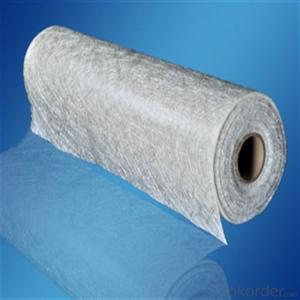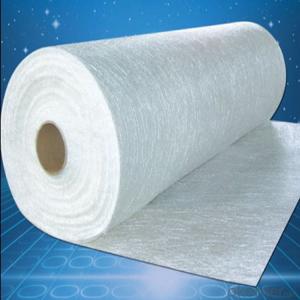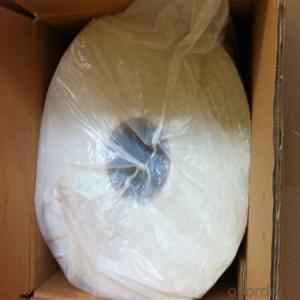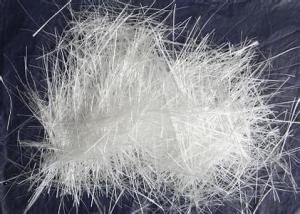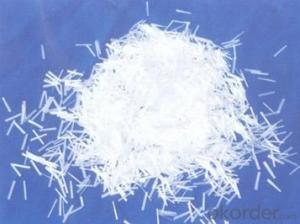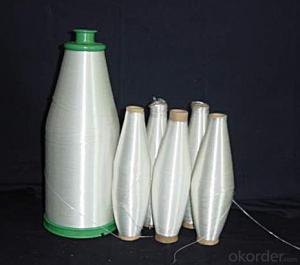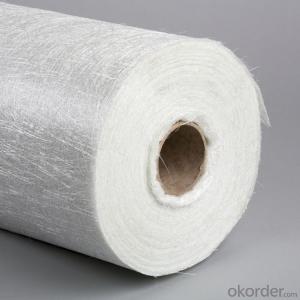450gsm Powder Fiberglass Chopped Strand Mat C Glass
- Loading Port:
- China main port
- Payment Terms:
- TT OR LC
- Min Order Qty:
- 1 kg
- Supply Capability:
- 5000 kg/month
OKorder Service Pledge
OKorder Financial Service
You Might Also Like
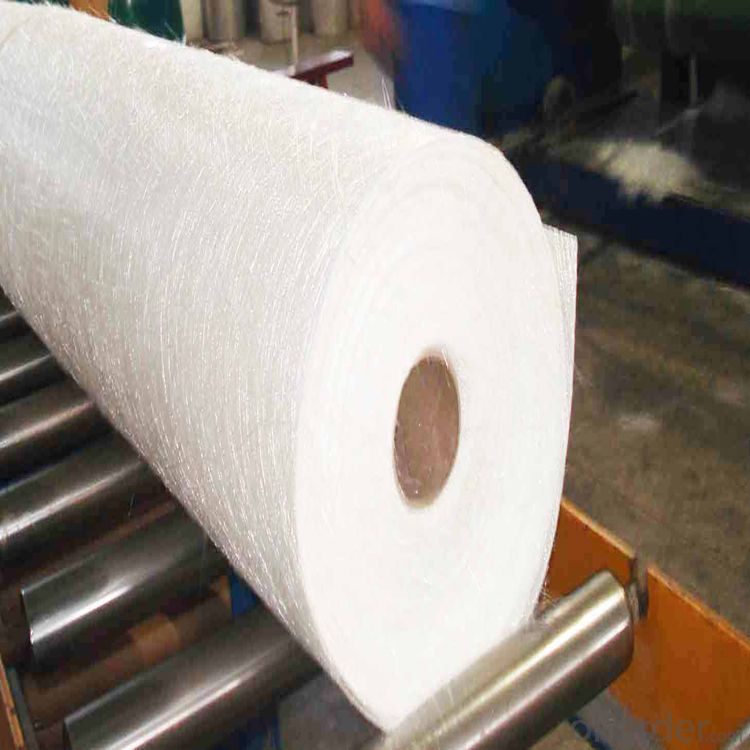
Product Description:
Chopped strand mat is made from chopped glass fibers, which are bonded with powder or emulsion binders. It can be used in hand lay-up process and continuous laminating process to produce FRP products, such as plates, lighting board, hull, bathtub, cooling towers, anti-corrosion materials, vehicles.
Features:
Uniform thickness, softness and hardness good.
Good compatibility with resin, easy completely wet-out.
Fast and consistent wet-out speed in resins and good manufacturability.
Good mechanical properties, easy cutting.
Good cover mold, suitable for modeling complex shapes.
Application:
fiberglass thickness is suitable for application by hand lay-up, reinforce and machine FRP molding,
including interior decoration of vehicles, boat hulls, complete set of sanitary equipment, anticorrosive pipes, tanks, building materials, tables, chairs, panels and all kind of composite FRP products.
Specifications:
Item | Over Density | Moisture Content | Chop Density | Polyester Yarn | Width |
(g/m2) | (%) | (g/m2) | (g/m2) | (mm) | |
EMK300 | 309.5 | ≤0.15 | 300 | 9.5 | 50-3300 |
EMK380 | 399 | 380 | 19 | ||
EMK450 | 459.5 | 450 | 9.5 | ||
EMK450 | 469 | 450 | 19 | ||
EMC0020 | 620.9 | 601.9 | 19 | ||
EMC0030 | 909.5 | 900 | 9.5 |
Special products are available according to customer’s requirement.
Product Packaging:
Each Surface Tissue is wound onto a paper tube which has an inside diameter of 76mm and the mat roll has a diameter of 330mm. The mat roll is wrapped up with plastic film,and then packed in a cardboard box or wrapped up with kraft paper. The rolls can be vertically or horizontally placed. For transportation, the rolls can be loaded into a cantainer directly or on pallets.
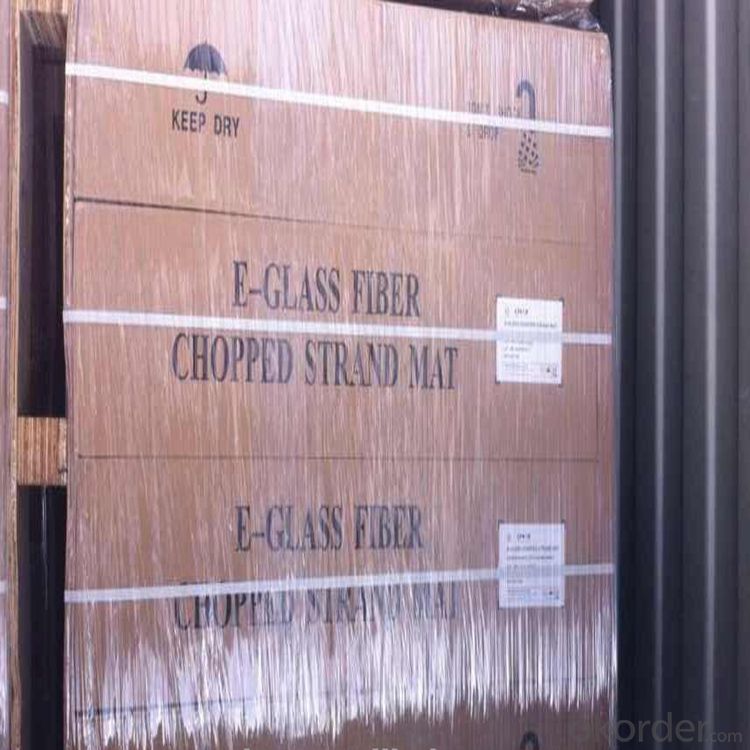
Product Storage:
Unless otherwise specified, Chopped Strand Mat should be stored in a dry, cool and rain-proof area. It is recommended that the room temperature and humidity should be always maintained at 15℃~35℃ and 50%~75% respectively.
Company Information
CNBM (China National Building Material) Group is the largest comprehensive building materials group in China that in integrate scientific research, manufacturing and logistics into one entity. The largest building materials and equipment specialists in China. Upon State Council approval, today CNBM owned more than 300 subordinate manufacturing factories and servicing companies. There are 6 fully owned public listed companies and 11 partially owned with substantial shares public listed companies. In many of these fields, CNBM is playing the leading role in the building industry in the country.

Order Information
Ordering please specify:
1. the product code, 2. weight, 3. width, 4. order quantity, 5. packaging, 6. special requirements please specify.
FAQ:
1. How long will you get reply?
Any inquiry will be replied within 24 hours. Usually we will reply within 12 hours.
2. How long is warranty period?
We provide 3 year warranty period.
3. What is your MOQ?
Any order quantity is available.
4. Can you provide sample?
Yes, samples are in stock. we can offer free sample for you.
5. Payment terms?
We can accept L/C, T/T, Western Union, Paypal etc.
6. Do you offer OEM service?
Yes, we can print customers’ logo on the packaging;
And the size and specification can be produced and design according to your demand.
7. What is the Production Lead Time?
15-20 days for bulk production after confirm the order.
- Q:Can fiberglass chopped strand be used in the production of construction panels?
- Yes, fiberglass chopped strand can be used in the production of construction panels. Fiberglass chopped strand is a type of reinforcement material made from short lengths (strands) of glass fibers that are randomly oriented and bound together with a binder. These strands can be mixed with various resins, such as polyester or epoxy, to create a composite material that is strong, lightweight, and resistant to various environmental factors. In the production of construction panels, fiberglass chopped strand can be used as a reinforcement material to enhance the structural integrity and durability of the panels. The strands are typically added to the resin mixture and then molded into the desired shape, such as flat panels, sheets, or panels with specific profiles. The addition of fiberglass chopped strand helps to improve the strength and stiffness of the construction panels, making them more resistant to bending and cracking. It also provides better impact resistance and dimensional stability, ensuring that the panels can withstand various loads and environmental conditions. Furthermore, fiberglass chopped strand can also enhance the fire resistance and thermal insulation properties of the construction panels. The glass fibers in the chopped strand act as a barrier against heat transfer, reducing the risk of fire spreading and improving energy efficiency. Overall, the use of fiberglass chopped strand in the production of construction panels offers numerous benefits, including increased strength, durability, fire resistance, and thermal insulation. Hence, it is a suitable material choice for manufacturing construction panels.
- Q:What do the surplus of the glass fiber used for?
- The short cut fiber is used in the molding sheet or the molding compound, and also put it in the position of the hand paste glass fiber reinforced plastic with short cut fiber.
- Q:Can fiberglass chopped strand be used for reinforcing wood materials?
- Yes, fiberglass chopped strand can be used for reinforcing wood materials. Fiberglass chopped strand is a type of reinforcement material made from fine strands of glass that are cut into shorter lengths. It is commonly used in composite materials to enhance their strength and durability. When used in combination with wood materials, fiberglass chopped strand can help improve the overall structural integrity and performance. The fiberglass strands provide added strength and rigidity, making the wood less prone to warping, cracking, and splitting. It also helps to reduce shrinkage and expansion caused by moisture, enhancing the dimensional stability of the wood. To reinforce wood with fiberglass chopped strand, the strands are typically mixed with an adhesive or resin and applied onto the wood surface. This creates a strong bond between the wood and the fiberglass, effectively reinforcing the material. However, it is important to note that the effectiveness of fiberglass chopped strand in reinforcing wood materials may vary depending on various factors such as the type and quality of the wood, the application method, and the specific requirements of the project. It is recommended to consult with a professional or follow manufacturer guidelines for best results.
- Q:How is the creep resistance of fiberglass chopped strand composites tested?
- The creep resistance of fiberglass chopped strand composites is typically tested using a variety of methods. One common approach is to subject the composite material to a constant load or stress over an extended period of time, typically at elevated temperatures. This is known as the creep test. During the creep test, the composite specimen is placed under a constant stress and its deformation under this stress is continuously measured over time. The test can be conducted using specialized equipment such as a creep testing machine that applies the desired load and monitors the deformation. The test is typically performed at elevated temperatures because creep is more pronounced at higher temperatures. This allows for the evaluation of the composite material's ability to resist deformation and maintain its structural integrity under long-term load conditions, which is especially important for applications where the material will be subjected to sustained stress over extended periods. The results of the creep test are usually presented as creep curves, which show the relationship between deformation and time under the applied stress. These curves provide valuable information about the creep behavior of the fiberglass chopped strand composite, including the rate of deformation, the time-dependent nature of creep, and the potential for failure. By testing the creep resistance of fiberglass chopped strand composites, manufacturers and researchers can assess the material's suitability for various applications, such as structural components in construction, automotive parts, and aerospace components. It helps ensure that the composite material can withstand long-term loading without excessive deformation or failure, providing confidence in its performance and durability.
- Q:Is fiberglass chopped strand easy to handle and process?
- Yes, fiberglass chopped strand is relatively easy to handle and process. It is lightweight and can be easily cut and shaped to fit various applications. Additionally, it can be mixed with resins or other materials to create composite products.
- Q:Can fiberglass chopped strand be used in the production of water pipes?
- Yes, fiberglass chopped strand can be used in the production of water pipes. Fiberglass is a versatile material that offers several advantageous properties for water pipe manufacturing. It has high strength and rigidity, which makes it suitable for handling the pressure and stress associated with water distribution systems. Fiberglass is also corrosion-resistant, meaning it can withstand exposure to various chemicals and minerals present in water without deteriorating. Additionally, it is a lightweight material, making it easier to handle and transport during the production and installation processes. Moreover, fiberglass has excellent insulating properties, which can help maintain the temperature of the water flowing through the pipes. Overall, using fiberglass chopped strand in the production of water pipes can result in durable, long-lasting, and reliable infrastructure for water distribution.
- Q:How does the fiber content affect the coefficient of thermal expansion of chopped strand composites?
- The amount or percentage of fibers present in chopped strand composites is referred to as the fiber content. The change in dimensions of a material due to temperature variations is measured by the coefficient of thermal expansion (CTE). Determining the CTE of chopped strand composites is greatly influenced by the fiber content. Generally, increasing the fiber content results in a decrease in the CTE of the material. This is due to the fact that fibers, such as carbon, glass, or aramid, have lower thermal expansion coefficients compared to the matrix material, which is typically a polymer resin. By increasing the fiber content, the fibers act as reinforcements and restrict the movement of the matrix material. This restriction limits the expansion and contraction of the composite, leading to a lower CTE. The fibers effectively distribute and absorb the thermal stresses that occur during temperature changes, thereby reducing the overall dimensional changes of the composite. It is important to consider that the CTE of the composite is also affected by the type and properties of the fibers used. Different fibers possess different CTE values, and factors such as their orientation, alignment, and interfacial adhesion with the matrix material can impact the thermal expansion behavior of the composite. In conclusion, the fiber content of chopped strand composites significantly influences their coefficient of thermal expansion. Increasing the fiber content decreases the CTE by providing reinforcement, restricting the movement of the matrix material, and absorbing thermal stresses. However, the specific properties of the fibers and their interaction with the matrix material also contribute to determining the final CTE of the composite.
- Q:How does the fiber pull-out resistance of fiberglass chopped strand affect the performance of composites?
- The fiber pull-out resistance of fiberglass chopped strand significantly affects the performance of composites. A higher fiber pull-out resistance ensures better mechanical properties, such as increased strength and stiffness, improved fatigue resistance, and enhanced load-bearing capabilities. This resistance prevents the fibers from slipping out of the matrix material, allowing them to effectively transfer stress and contribute to the overall structural integrity of the composite. Therefore, a higher fiber pull-out resistance positively impacts the durability and performance of composites in various applications.
- Q:Is fiberglass chopped strand compatible with different curing methods?
- Yes, fiberglass chopped strand is compatible with different curing methods. Fiberglass chopped strand is commonly used as a reinforcement material in various industries such as automotive, construction, and aerospace. It can be used in conjunction with different curing methods, including thermosetting and thermoplastic processes. In thermosetting processes, such as resin transfer molding (RTM) or vacuum infusion, the fiberglass chopped strand is typically impregnated with a thermosetting resin, which is then cured at elevated temperatures. The resin undergoes a chemical reaction, resulting in a hardened and durable composite material. Fiberglass chopped strand is compatible with these processes as it provides strength and reinforcement to the cured composite. In thermoplastic processes, such as injection molding or compression molding, the fiberglass chopped strand is mixed with a molten thermoplastic resin, which solidifies upon cooling. The chopped strand reinforcement enhances the mechanical properties of the thermoplastic material, making it stronger and more resistant to deformation. Fiberglass chopped strand is compatible with these processes as it can be easily incorporated into the molten resin and distributed evenly throughout the molded part. Overall, fiberglass chopped strand is a versatile material that can be used with different curing methods, providing enhanced strength and durability to the final product. Its compatibility with various processes makes it a preferred choice in industries where high-performance composites are required.
- Q:What are the typical tensile and flexural strengths of chopped strand composites?
- The typical tensile strength of chopped strand composites ranges from 200 to 600 MPa, while the flexural strength typically falls within the range of 300 to 800 MPa.
1. Manufacturer Overview |
|
|---|---|
| Location | |
| Year Established | |
| Annual Output Value | |
| Main Markets | |
| Company Certifications | |
2. Manufacturer Certificates |
|
|---|---|
| a) Certification Name | |
| Range | |
| Reference | |
| Validity Period | |
3. Manufacturer Capability |
|
|---|---|
| a)Trade Capacity | |
| Nearest Port | |
| Export Percentage | |
| No.of Employees in Trade Department | |
| Language Spoken: | |
| b)Factory Information | |
| Factory Size: | |
| No. of Production Lines | |
| Contract Manufacturing | |
| Product Price Range | |
Send your message to us
450gsm Powder Fiberglass Chopped Strand Mat C Glass
- Loading Port:
- China main port
- Payment Terms:
- TT OR LC
- Min Order Qty:
- 1 kg
- Supply Capability:
- 5000 kg/month
OKorder Service Pledge
OKorder Financial Service
Similar products
New products
Hot products
Related keywords

